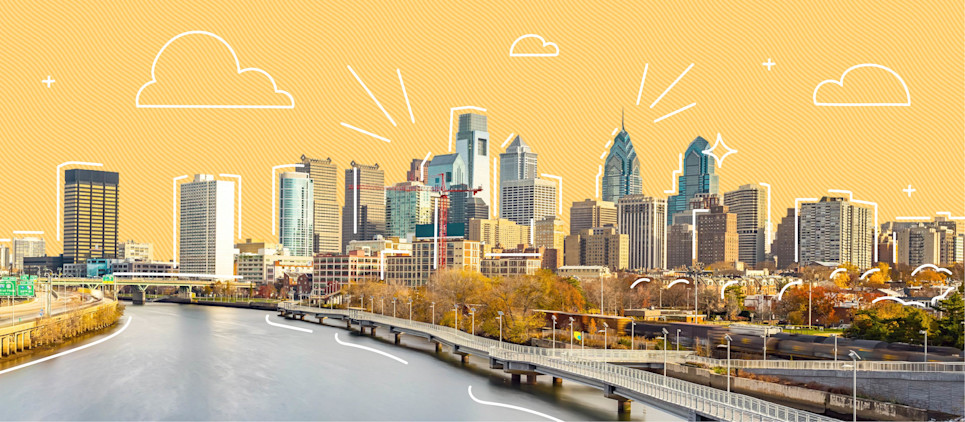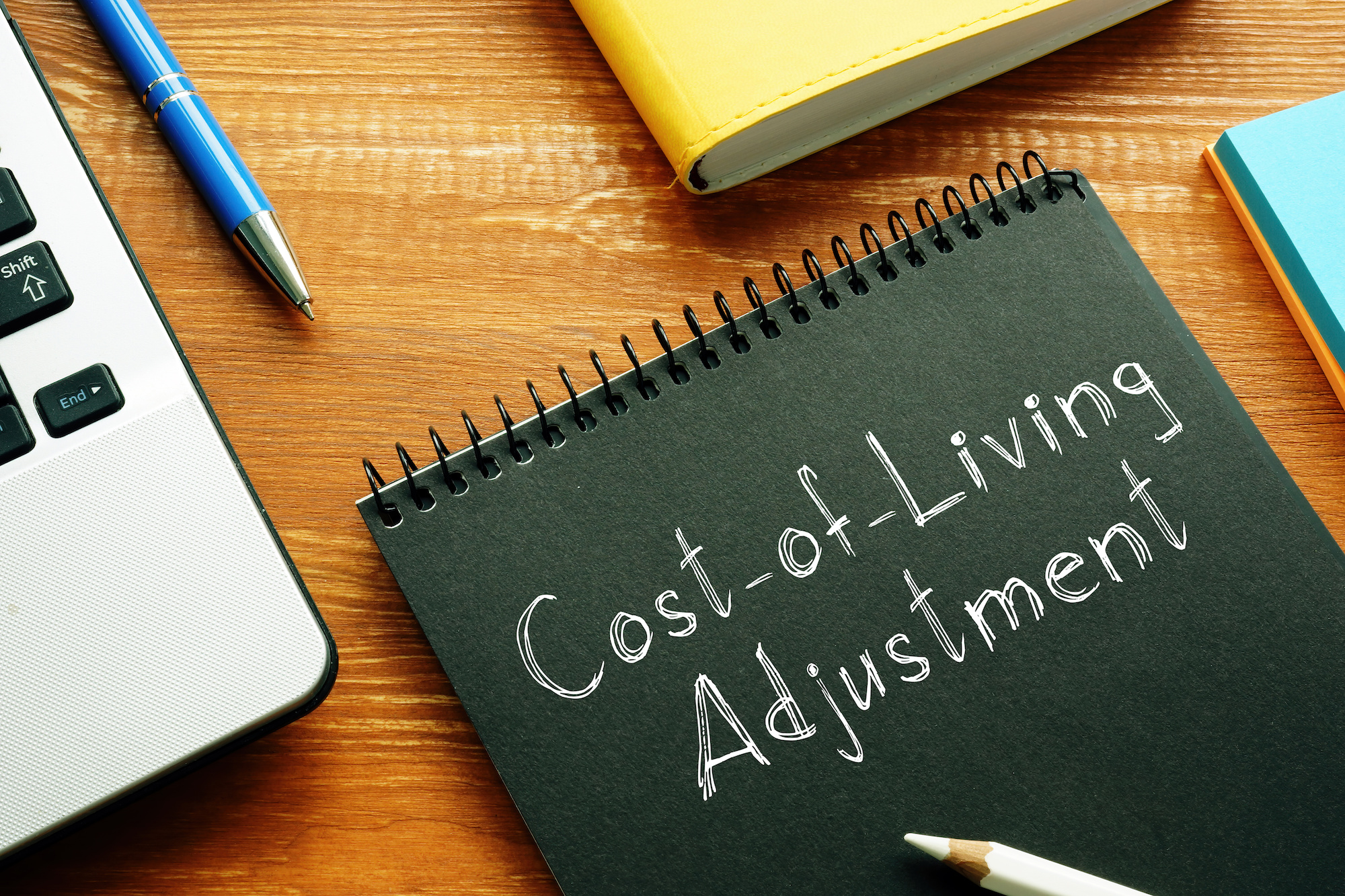What is the real cost of living in Philadelphia, PA?
The city of Philadelphia, Pennsylvania, has many nicknames, including “Philly” and “The City of Brotherly Love.” The nation’s former capital is also often referred to as "America's Birthplace," as the Declaration of Independence was signed at the city’s Independence Hall in 1776.
In addition to historical monuments and well-preserved architecture, Philly is known for its thriving arts scene and local food culture. Top attractions include the Philadelphia Museum of Art (with the famous “Rocky steps” from the 1976 film) and the nearby Reading Terminal Market, where you can sample specialty cheesesteaks and craft beers. The city also offers a number of green spaces and public squares, and throughout most neighborhoods you’ll find spectacular street art.
The Philadelphia area's many universities make the city a top education destination. It’s also a hub for many different industries, including finance, health care, and manufacturing, And in recent years, the city has experienced an information technology and biotechnology boom.
Numbeo’s cost of living index, which factors the cost of consumer goods prices, including groceries, restaurants, transportation, and utilities, scored Philadelphia’s cost of living at 78.47 out of 100 in March 2021. (New York City is the index’s benchmark for most expensive cities with a score of 100.)
When you add rent to the mix, the score declines to 64.63, which means living in Philly is more affordable than New York City, Washington, D.C., and Chicago, and about in line with Portland, Oregon.
Payscale.com estimates that Philadelphia’s cost of living is 17% higher than the national average. Still, this can vary greatly depending on how much you spend on things like housing and transportation.

Table of contents
Housing: Rental pricesHousing: Home purchase pricesUtilities costFood costTransit costAverage salaryHousing: Rental prices
Approximately 45% of Philadelphia housing is occupied by renters. In January 2021, the average rent for an apartment in Philadelphia was $1,666 (compared to the national average of $1,465). This monthly average is 51.26% lower than rental prices in Manhattan, which is just over an hour away from Philly by train. But it’s important to note that there’s a big disparity between average rent prices in different Philadelphia neighborhoods.
In some of the city’s most popular areas like Rittenhouse Square, Center City West, Washington Square West, and Queen Village Pennsport, you can expect to pay rental prices much higher than the city average, ranging from $1,960 to $2,420 per month. Neighborhoods like Belmont, Saunders Park, University City, and West Powelton are among the most expensive in Philadelphia, where the monthly asking prices reach $2,519.
Trendy areas like Manayunk, East Kensington, and Fishtown hover around the city average, coming in at $1,474, $1,628, and $1,788 per month, respectively. Renters can save money by checking out less central neighborhoods such as Frankford and Whitaker, where the monthly average rent is $823.
Even if these numbers sound high, living in Philadelphia doesn’t have to be out of reach. Coliving with roommates allows you to spend significantly less than the average cost of solo housing.
Housing: Home purchase prices
Philadelphia’s real estate market is strong for homeowners, who comprise more than half of the city’s population. Over the past year, the average value for Philadelphia homes—single-family, condominium, and co-operative—has gone up 11.9%, with a typical home price of $208,546 in January 2021. While this is very low compared to the nationwide average of $269,039, consider that the average monthly net salary for workers in Philadelphia is significantly lower than elsewhere in the country (more on that below).
Philadelphia’s median home prices are on par with costs in San Antonio, Texas. They’re a fraction of the cost of homes in San Francisco, which are valued above $1,400,444 on average.
Pennsylvania’s average effective property tax rate is 1.50%, but this varies by county—and in Philadelphia, the average rate is 0.99%, slightly below the national average.
Utilities cost
For Philadelphians, the average monthly utility bill is around $150.32, which includes electricity, heat/cooling, water, and garbage pickup. Adding internet costs an additional monthly average of $60.99, which amounts to an overall average monthly spend of $211.31. Altogether, this is similar to costs for utilities in Brooklyn and Chicago, and slightly lower than the national average of $229.39 (for basic utilities and internet).
Food cost
While culinary culture is a pillar of Philly’s popularity, dining out here can be significantly less expensive than in other major cities with established foodie scenes. Depending on the type of restaurant, meals in Philadelphia can range from $15 to $55 (the former is the average for a meal for one person at an inexpensive restaurant; the latter for a three-course meal for two people at a mid-range spot).
Compare these food prices to those in San Francisco, where you can expect to pay an average of $80 for a three-course meal for two people at a mid-range restaurant. In New York, be prepared to dish over $100, on average.
Philadelphians typically spend at least $388 per person for monthly grocery costs, which is about $47 higher per month than the national average. Thankfully, most groceries are exempt from Pennsylvania’s 8% sales tax rate.

Transit cost
It’s pretty easy to get around Philly without a car; the city has a walk score of 79, ranking it the 4th most walkable city in the United States.
Still, more than half of Philadelphia’s residents report using a car as their main means of transportation, driving for an average of 42.36 minutes per 18.8-mile distance. This can contribute to a higher cost of living when you consider Philadelphia’s average gas prices of $2.68 per gallon—even if the city’s prices are 12 cents below the national average.
Commuters can save money by utilizing the SEPTA (Southeastern Pennsylvania Transportation Authority), which runs an extensive network of regional rail, bus, subway, and trolley lines across the Philadelphia metro area. SEPTA’s one-way ticket fares start at $2.50, which is comparable to public transit prices in Chicago. A monthly commuter pass costs $96 and works for 240 rides on all forms of regional transit in Philadelphia.
Average salary
Pennsylvania’s minimum wage is the lowest in the Northeast region, amounting to $7.25 per hour—the nationwide minimum wage. As of March 2021, the average hourly wage for Philadelphia workers is $27.69, which is just above the nationwide average of $25.72. The average salary in Philadelphia is $70,000 per year, which is pretty close to Boston’s $79,000 average (and the cost of living in Boston is significantly higher).
When it comes to state income taxes, Pennsylvania utilizes a “flat tax” system, which means that every taxpayer in the state, regardless of their level of income, pays the same percentage of their taxable income, which in this case is 3.07%. But Philadelphia residents have to add an additional 3.87% above this amount in local earned income taxes.
Spending responsibly on rent can help keep your personal finances on track. Shared housing is one of the best ways to lower your rent cost. Bungalow’s homes are designed for roommates, located in the best neighborhoods, and set up for seamless living. Whether you already have roommates or are looking for new ones, there’s a Bungalow with your name on it. Find your Bungalow.
Ready to find your next home?
Move-in ready homes and a built-in community so you can feel at home, together — wherever you are.
Suggested articles




